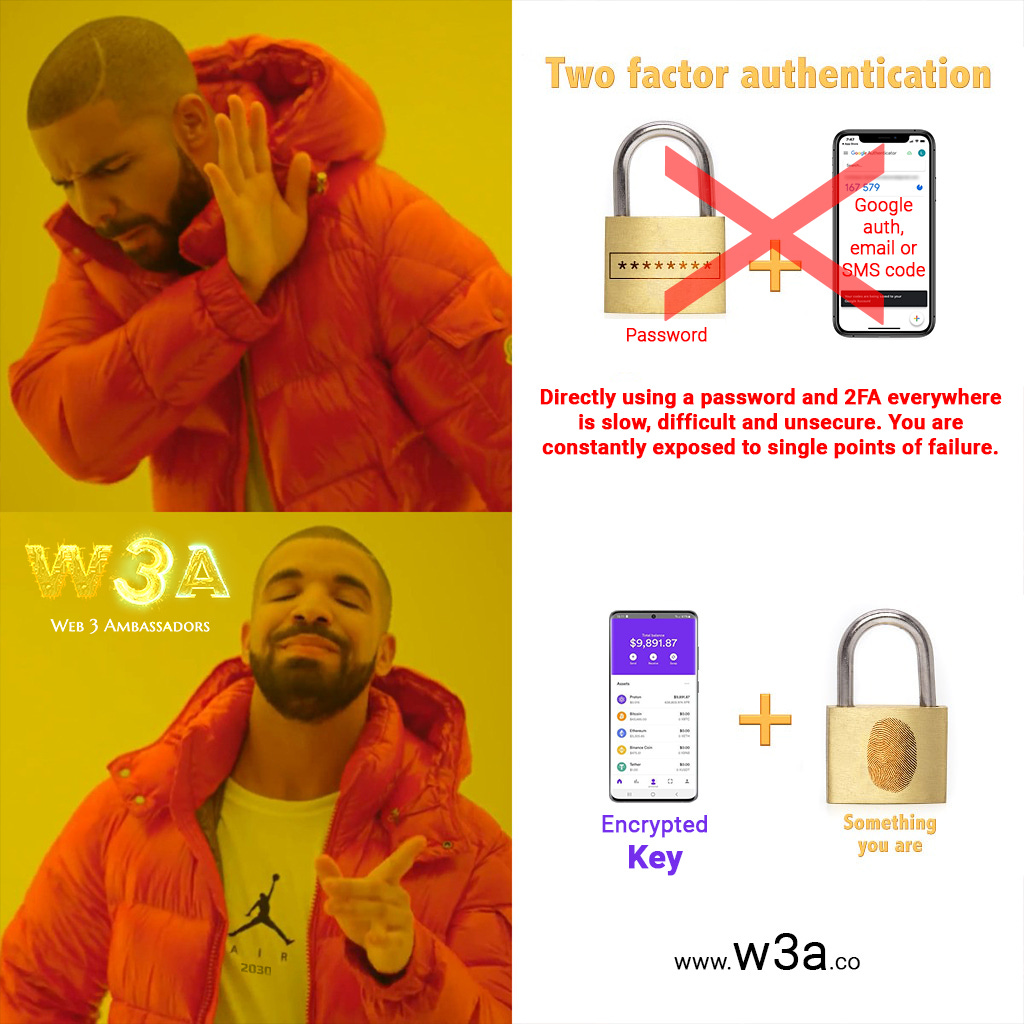Can we do better than 2FA please?
We don't believe in passwords anymore, do you?
BiiP: Revolutionizing Web 3 by Eliminating 2FA and Empowering Users
Introduction
The transition from Web 1.0 to Web 2.0 brought about significant advancements in technology and connectivity. However, it also exposed several design flaws, cybersecurity vulnerabilities, and single points of failure within centralized systems. To address these issues, Two-Factor Authentication (2FA) emerged as a crucial security layer, requiring users to provide two or more keys or authorization methods during registration and authentication. While 2FA significantly improved security, it added complexity to user interactions. Web 3.0, the next evolution of the internet, promises to revolutionize the way we interact with online systems, eliminating the need for 2FA while enhancing security.
In this article, we will explore how Web 3.0 initiatives like XPR networks’s WebAuth app and BiiP (Biospheric Identity Internet Protocol) aim to achieve this, providing a seamless and secure user experience.
The Need for Web 3.0
Web 1.0 and Web 2.0, with their centralized structures, posed various challenges, including data breaches, privacy concerns, and reliance on intermediaries. 2FA was introduced to mitigate these risks, but it often required users to juggle multiple keys or methods, making the registration and authentication process cumbersome.
Web 3.0, powered by blockchain technology, promises to address these issues by decentralizing control and data ownership. It envisions a future where users have more control over their personal data and online interactions, without the need for complex security measures like 2FA.
Instead of using the same password everywhere in all your web accounts, and exposing them to single points of failure whenever you type or save these passwords anywhere in a centralized system, we are working on a new way of authenticating and authorizing yourself as a unique human being.
BiiP: A Game-Changing Solution
BiiP, short for Biospheric Identity Internet Protocol, is one of the pioneering initiatives in the Web 3.0 landscape. It aims to eliminate 2FA and provide a seamless, secure, and user-centric online experience. At its core, BiiP enables users to manage all their web accounts using a single blockchain account managed by a single key and protected by biometrics.
Unlike traditional 2FA methods that require users to manage and access multiple keys or codes at the same time, BiiP simplifies the process by consolidating everything into a single, secure blockchain account. Users can access all their web accounts with ease, without the need for additional keys or authorization methods.
Seamless Integration
One of BiiP's remarkable features is its ability to seamlessly integrate into any web and IoT system. With just one line of code, developers can integrate BiiP into their applications or systems in a matter of minutes. This ease of integration is made possible by BiiP's open-source nature, ensuring accessibility for developers without the need to learn a new programming language or undertake extensive redevelopment efforts.
Revolutionary Implications
BiiP is more than just an authentication method; it's a protocol that has the potential to revolutionize the entire digital landscape. It empowers users to transition from Web 1.0 and Web 2.0 systems to Web 3.0, instantly connecting their accounts to blockchain technology. This connection enables users to govern and manage their personal data and funds through the protocol, without the need for contracts and permissions from banks or governments.
Furthermore, BiiP puts users in control of their virtual identity and funds, allowing them to grant or revoke access according to their predefined rules. This newfound autonomy empowers users to retain their value within the network or application they are using, marking a significant departure from the data-hoarding practices of centralized systems.
Conclusion
BiiP, the open source Biospheric Identity Internet Protocol, represents a groundbreaking step towards the realization of Web 3.0.
By eliminating the need for 2FA and simplifying user authentication through a single blockchain account, BiiP enhances security while streamlining the online experience. Its seamless integration capabilities, open-source nature, and revolutionary implications position BiiP as a transformative force in the digital world. With BiiP, users can finally take control of their personal data and funds, ushering in a new era where technology empowers individuals to govern their online presence and interactions, all without the constraints of contracts and permissions from banks or governments.
Read more about it in our white paper:
https://docs.gratitudetoken.world/whitepaper/our-solutions/technology/straight-to-the-biip
Support its development by investing in this Indiegogo campaign:
https://www.indiegogo.com/projects/the-end-of-social-media/reft/9515746/w3a
Join the Movement!
Are you ready to be at the forefront of the digital revolution? Subscribe to our newsletter and become a part of the Web 3 Ambassadors community! Stay informed about the latest insights, innovations, and trends shaping the decentralized future.
But why keep all this transformative knowledge to yourself? Share this edition with at least one friend, and let's expand the circle of Web 3 Ambassadors. Together, we can empower more individuals to embrace the potential of Web 3.0 and shape a more decentralized, inclusive digital landscape.
Subscribe now and spread the vision of a Web 3 future!
Write for Web 3 Ambassadors
If you like writing about web 3, decentralization, blockchain, crypto, open source software and new fairer models of business, and you want your articles published in our blog, get in touch with us at [email protected]


